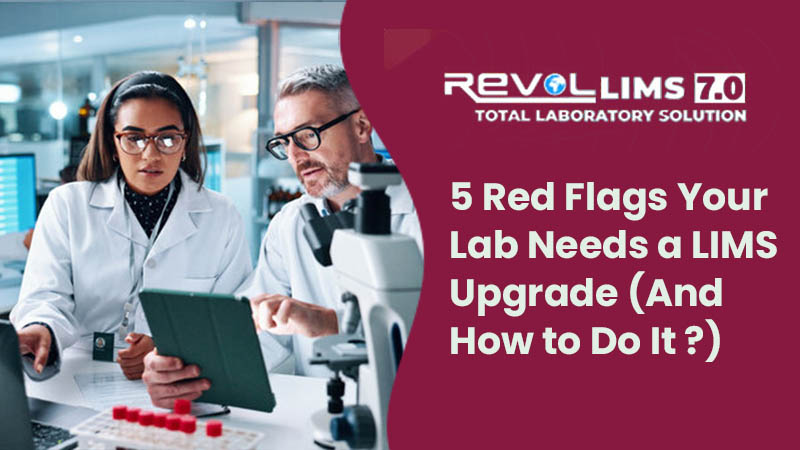
Introduction
Laboratory management in educational institutions, especially universities, is a complex task that involves handling a vast array of student experiments, research projects, and data collection. As academic labs grow in size and sophistication, the traditional methods of managing lab workflows, student data, and experiments often become inefficient. This is where a Laboratory Information Management System (LIMS) can make a significant difference. LIMS systems are designed to streamline operations, enhance data accuracy, and improve overall lab management, making them invaluable for educational institutions.
The Challenges of Managing Labs in Universities
- Tracking Student Experiments: Universities typically have large numbers of students performing experiments in various labs. Keeping track of their work, maintaining accurate records, and ensuring data integrity can be time-consuming and error-prone without the right tools.
- Data Management: Managing the large volumes of data generated by experiments, including research notes, results, and observations, is a major challenge in academic labs. Disorganized data can lead to confusion, errors, and wasted resources.
- Resource Allocation: Labs often have limited equipment, chemicals, and resources. Tracking these resources in real-time to avoid shortages or misallocation is crucial for smooth operations.
- Compliance and Accreditation: Universities must ensure their labs meet industry standards and regulations (such as ISO 17025 for research). Compliance can be difficult to maintain without a streamlined system for documentation and audit trails.
How LIMS Can Enhance Lab Management in Universities
Efficient Sample and Experiment Tracking
- LIMS enables universities to track student experiments and research projects from start to finish. Each experiment can be linked to a specific student, research project, or course, and every step of the experiment (from sample collection to result analysis) can be recorded in real-time.
- LIMS automatically logs data, which makes it easier for instructors to monitor student progress, track the quality of the experiments, and ensure accuracy. Additionally, students can access their past work, making it easier to review and build upon their findings.
Centralized Data Management
- One of the most significant advantages of LIMS is its ability to centralize data. All student experiment data, research results, and documentation are stored in a single, searchable system, making it easier for faculty, students, and lab managers to retrieve and review information.
- The system can also integrate with other university systems, such as student databases or research management platforms, ensuring seamless data flow across departments.
Resource Management and Inventory Tracking
- LIMS helps universities track laboratory equipment, chemicals, and supplies. The system can notify administrators when inventory levels are low, track usage patterns, and even manage maintenance schedules for lab equipment. This reduces the risk of running out of critical materials or facing downtime due to malfunctioning equipment.
- With accurate resource allocation, universities can optimize their budgets, reduce waste, and improve the sustainability of their labs.
Ensuring Compliance and Quality Assurance
- Academic institutions must adhere to various regulatory standards, whether for research ethics or safety protocols. LIMS simplifies the process of maintaining compliance by keeping an audit trail of all experiments, sample handling, and test results.
- For universities offering accredited programs (e.g., in chemistry, biology, or environmental sciences), LIMS helps ensure that the labs meet industry standards for quality and safety, making it easier to pass inspections and maintain accreditation.
Facilitating Collaboration
- LIMS can also enhance collaboration among students, researchers, and faculty. Multiple users can access data in real-time, enabling collaborative research and experiment analysis.
- It also allows instructors to monitor ongoing experiments, provide timely feedback to students, and ensure academic integrity by tracking data changes and experiment results.
Cost and Time Efficiency
- By automating routine tasks such as sample tracking, data entry, and resource management, LIMS reduces the administrative burden on lab staff and faculty. This leads to more efficient use of time and resources, which can result in cost savings for the institution.
- LIMS also minimizes human error, ensuring that data entry is accurate and that results are consistent.
Step-by-Step Example of LIMS Implementation
Step 1: Choosing the Right LIMS The university chooses a LIMS tailored for educational institutions. It integrates easily with other university systems (e.g., student database) and offers features for experiment tracking, resource management, and data analytics.
Step 2: Setup and Integration The biology department works with the LIMS provider to integrate the system with their existing infrastructure. This includes:
- Creating user profiles for students and faculty, which allows them to access the LIMS system with their university login credentials.
- Linking the LIMS with existing student databases so that experiment records can be tied to specific students or research projects.
- Setting up data input templates for common experiments, such as PCR (Polymerase Chain Reaction) or bacterial culture tests, to standardize data entry.
Step 3: Tracking Student Experiments Each student is assigned a unique identifier in the system linked to their course or research project. When students perform experiments, they log their sample information, observations, and results directly into the LIMS, which automatically associates the data with their profile. For example:
- Sample Tracking: A student collects a sample for a microbiology experiment. They input the sample information (e.g., sample ID, date of collection, experiment type) into the LIMS.
- Experiment Logs: Throughout the experiment, students enter data such as reagent usage, temperature settings, and incubation times. The LIMS system timestamps each entry, ensuring accuracy and providing a detailed log of each experiment's progress.
Step 4: Real-Time Data Access for Faculty Instructors and lab assistants can access the LIMS in real-time to monitor student progress. They can view:
- • Live experiment updates: Faculty can see which students are on track, which ones need assistance, and which experiments are nearing completion.
- • Data Quality Checks: Faculty can review the entered data for inconsistencies or errors, providing feedback to students immediately through the system.
Step 5: Resource and Inventory Management The LIMS also manages the department’s laboratory resources. For example:
Faculty can request new supplies through the system, which automatically generates purchase orders when inventory levels fall below a predefined threshold.
- Inventory Tracking: The system tracks chemicals, lab equipment, and consumables (e.g., petri dishes, test tubes). It notifies lab managers when supplies are running low.
- Equipment Usage: Lab equipment like microscopes or centrifuges are booked through the LIMS system. The system tracks usage, maintenance schedules, and ensures that the equipment is available when students need it.
Step 6: Collaboration and Report Generation Students can share their experiment results with peers and faculty for collaboration. For example:
- Group Projects: In collaborative research projects, students can share their data and findings in the LIMS, making it easier for multiple users to work together in real-time.
- Report Generation: The LIMS system can generate comprehensive reports for individual experiments. For example, when students complete their experiment on enzyme activity, the system compiles their results into a downloadable PDF or Excel sheet that includes all
Few Examples
University of California, San Diego (UCSD)
UCSD, a major research university, has implemented LIMS systems across multiple laboratories, particularly in departments like biology, chemistry, and environmental science. These systems help manage research data, track experiments, and ensure compliance with regulatory standards. They streamline the entire process from sample collection to analysis, improving both the quality of data and the speed at which it is processed. UCSD also uses LIMS to manage complex environmental and clinical research data, which is critical for large-scale, multi-disciplinary projects.
University of Oxford (UK)
The University of Oxford uses LIMS in various research labs across its departments, particularly in its Department of Chemistry and Department of Biochemistry. By integrating LIMS with existing research tools and systems, Oxford researchers can automate data collection and analysis, as well as better manage inventory and lab resources. This approach improves research efficiency and ensures that lab work is properly documented and compliant with various regulations.
Stanford University
Stanford's School of Medicine has implemented LIMS in its clinical and research laboratories to handle complex datasets, particularly in genomics and personalized medicine. LIMS at Stanford is integrated with other lab management tools to track samples, manage data from laboratory equipment, and ensure that data from clinical trials is accurately recorded and stored. The system also helps in meeting regulatory compliance such as HIPAA (Health Insurance Portability and Accountability Act) and FDA guidelines for medical research.
MIT (Massachusetts Institute of Technology)
MIT's research labs, particularly in the fields of biological engineering and chemistry, use LIMS to manage their complex workflows, which involve a large number of experiments and vast data sets. By using LIMS, MIT ensures that their labs operate efficiently, with accurate tracking of materials, inventory, and experiments. This also allows researchers to collaborate more easily by sharing data through a centralized, cloud-based system.
University of Cambridge (UK)
Cambridge has integrated LIMS in its research labs, particularly within its biotechnology and life sciences departments. LIMS is used to streamline research workflows, manage experiments, and ensure that compliance standards are met for laboratory operations. The system also helps students and faculty alike in managing large volumes of data in an organized manner.
University of Michigan
The University of Michigan has implemented LIMS in multiple departments, including its College of Pharmacy, School of Public Health, and School of Medicine. LIMS helps track research samples, experiments, and equipment usage across a range of disciplines. It also supports the academic mission by providing a robust system for managing research and ensuring compliance with regulatory requirements.
Conclusion
For educational institutions, LIMS is more than just a tool for managing lab data—it's a way to transform how university labs operate, ensuring greater efficiency, accuracy, and collaboration. By integrating LIMS into their laboratory management processes, universities can improve student learning experiences, support cutting-edge research, and optimize the use of their resources. As educational institutions continue to grow and evolve, LIMS play a crucial role in supporting the next generation of scientists, researchers, and educators.


















